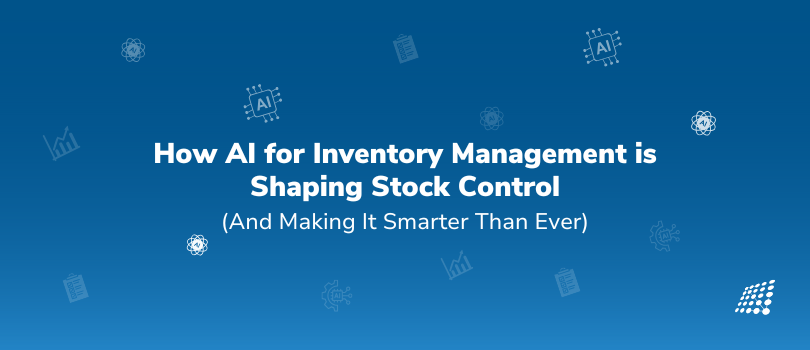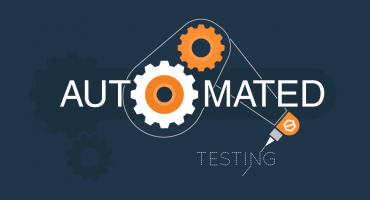How AI for Inventory Management is Shaping Stock Control (and Making It Smarter Than Ever)

How many businesses have lost sleep, just a little, stressing over whether their best-selling product will suddenly run out or if that shelf of overstock will pile up, collecting dust? In a way, inventory management has always been that never-ending balancing act. Too much here, not enough there. Customer expectations are rising, teams are scrambling, and numbers are piling up—the whole thing is enough to make any business owner feel like they’re stuck in a never-ending Excel sheet loop.
So, sooner or later, you start wondering, “Isn’t there a smarter, more confident way to manage all of this?” Enter AI that’s really shaking things up in the retail and e-commerce scenes. Data from 2019 reveals that just 11% of companies were using AI for warehouse automation globally. However, that number is expected to increase to an impressive 75% by 2030.
In this article, we'll explore AI inventory managemen, how AI is helping businesses manage their inventory more effectively. It’s not just about grand promises; it’s about real, practical strategies to keep shelves filled, costs down, and customers content.
What Is AI Inventory Management?

Put simply, AI inventory management is the practice of using artificial intelligence to improve how businesses handle their stock. This includes everything from keeping an eye on product levels to predicting when you’ll need to restock.
Traditional inventory management relied heavily on
- Manual record-keeping and spreadsheet tracking
- Human intuition for demand forecasting
- Reactive approaches to stock replenishment
- Limited visibility across multiple channels
- Time-consuming reconciliation processes
These methods, while functional, were plagued by human error, lacked real-time insights, and often resulted in costly stockouts or excess inventory situations.
Now, AI and automation are stepping in. They’re not just taking over repetitive work—they add layers of accuracy, speed, and adaptability that basic tools just can’t match. AI-powered AI for inventory management systems use:
- Machine Learning algorithms that continuously improve predictions
- Real-time data processing for instant decision-making
- Predictive analytics to anticipate future demand
- Automated workflows that reduce manual intervention
- Integrated platforms that sync across all sales channels
Expert analysis supports this shift. According to industry studies, global AI in supply chain markets was valued at around $1.5 billion in 2020. Forecasts show it could reach around $20 billion by 2027, with a compound annual growth rate above 30%. Clearly, for companies wanting to stay ahead, getting AI into their inventory playbook is no longer just an option.
Real-World Ways AI Is Changing Inventory Management

Here are the tangible ways Inventory management AI is reshaping how brands, shops, and warehouses approach their everyday stock problems.
Demand Forecasting: Taking out the Guesswork
One major win with AI in inventory management is demand forecasting. AI tools process past sales, market trends, customer habits, and even outside factors like weather or viral social posts. This leads to much sharper predictions on how much of a product you need and when. Companies that use machine learning for forecasting usually see fewer stockouts and less excess stock stuck on shelves.
Example: During festive sales or major events, retailers now use AI-driven platforms to understand not just what sold last year, but how social sentiment or weather may influence demand right now.
Real-Time Inventory Tracking: Know Your Stock, Every Second
Keeping tabs on stock across multiple locations is tough. IoT sensors, RFID, and barcode scanners feed information directly into AI-powered inventory management systems. This gives businesses near-instant updates on what’s available, what’s running low, and what needs ordering. This kind of transparency cuts down on confusion and costly errors.
Example: Large retail chains use AI to sync online, in-store, and warehouse inventory. A sale in one channel immediately reflects across the system, preventing double-selling or miscommunication.
Automated Replenishment: Never Run Out (or Over-Order)
Automated replenishment is about using AI to trigger purchase orders when inventory drops below a set threshold. This reduces manual checks and delays. By analyzing real-time data, AI systems not only reorder automatically but also predict optimum quantities, avoiding the pitfalls of overstocking or understocking.
Example: E-commerce brands utilize these systems to keep bestsellers in stock, letting the AI system send a reorder request to suppliers when levels start dipping.
Anomaly Detection: Spot Problems Before They Get Big
Sometimes sales spike unexpectedly, or items go missing. Artificial intelligence for inventory management excels at finding outliers in massive datasets—watching for theft, errors, or sudden demand jumps. Picking up on these blips quickly allows businesses to act before issues become costly.
Example: A drop in stock without matching sales can trigger a prompt investigation, letting managers address theft or miscounts early.
Warehouse Optimization: Smarter Layouts and Processes
AI for inventory management doesn’t just watch numbers. It can also suggest how to organize storage space for quicker picking, faster packing, and smoother shipping. These recommendations come from analyzing product popularity, size, and turnover rate to suggest better assignments of stock inside a warehouse.
Example: Electronics retailers use AI recommendations to store high-turnover items closer to dispatch points, improving order fulfillment speed.
Supplier Management with Data Insights
AI tools can rate suppliers on delivery speed, quality, pricing, and reliability. These insights help managers negotiate better contracts and choose suppliers that align with business goals. It adds transparency and supports more strategic supplier relationships.
Example: Businesses compare multiple suppliers' performance stats to see which partners consistently deliver on time, shifting future orders to the most reliable ones.
Multi-Channel Synchronization
For businesses selling on many platforms—think online stores, marketplaces, and physical shops—inventory management AI ensures all inventory records are up-to-date everywhere, all at once. No more needing to manually adjust counts after every sale.
Example: A shop using Shopify, Amazon, and its own website keeps one source of truth for inventory counts, thanks to AI, reducing overselling risks.
Dynamic Pricing and Promotion Planning
By analyzing stock levels, competitor prices, and market demand, AI can suggest—or even adjust—prices in real time. This increases revenue and helps move inventory efficiently.
Example: When inventory is high and demand is slow, AI can automatically offer discounts or personalized offers to boost sales.
Enhanced Risk Management and Scenario Planning
Supply chains are vulnerable to disruptions, from sudden demand surges to logistics breakdowns. AI inventory management can simulate different scenarios and prepare recommendations for mitigating risks, giving companies more confidence in their planning.
Example: Before a major holiday, businesses might simulate what happens if supply is delayed, allowing them to adjust safety stock in advance.
Real Benefits: Why AI in Inventory Management Matters

AI inventory management offers clear benefits:
- Better accuracy in stock planning and reordering
- Lower storage and labor costs
- Quick adjustments to market changes
- Happier customers who get what they want, on time
- Smoother scaling as your business grows
In other words, AI saves money, saves time, and boosts the customer experience.
Addressing the Challenges: What to Watch Out For

Adopting AI brings its own set of challenges, such as:
- Data quality: AI relies on clean, integrated data—scrubbing, validating, and updating is vital
- Upfront costs: The initial investment can be high, but quick wins (like automated reordering) bring early ROI
- Staff training: Teams need to learn new tools, not just software, but data-driven thinking
- Integration hurdles: Connecting AI to existing systems (POS, ERP, ecommerce) can cause hiccups, so a phased plan is wise
- Security and privacy: Managing customer and business data requires strict controls and compliance measures
Getting Started: Your AI Inventory Management Journey
Step 1: Assess Current State
- Evaluate existing inventory management processes
- Identify pain points and inefficiencies
- Quantify the cost of current challenges
Step 2: Define Objectives
- Set clear, measurable goals for AI implementation
- Prioritize use cases based on potential ROI
- Establish success metrics and KPIs
Step 3: Choose the Right Technology
- Evaluate AI inventory management solutions
- Consider integration requirements
- Plan for scalability and future needs
Step 4: Start Small and Scale
- Begin with pilot projects in specific areas
- Measure results and refine approaches
- Gradually expand to other inventory functions
Step 5: Monitor and Optimize
- Continuously track performance metrics
- Refine algorithms based on new data
- Stay updated with the latest AI developments
Conclusion: Making Inventory Smarter (and the Future Brighter)
Inventory management AI is making stock control smarter—no hype needed. These changes are already out there, making inventory less stressful and more reliable for retailers and e-commerce businesses. If you’re looking for ways to lower costs, meet demand, and scale your business without extra headaches, AI is more than a trend. It’s a practical advantage you can use today.
If you need help implementing AI for your inventory, our experts are here to ensure your AI for inventory management puts your mind at peace and keeps your business soaring.

Automated Testing – Top Reasons To Go For It

7 Rules to Follow and Stay Motivated at Work


